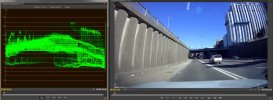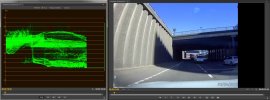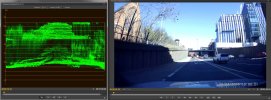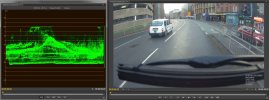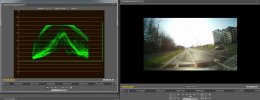Been playing about further and come across something that could be interesting. It looks like the dashcam is allowing the IRE level to go to 110 rather than the standard 100 and this could be what's contributing all the clipping at the upper end of the tonal curve as it's allowing too much to go over IRE100 and could be confusing/messing with the AE table.
Is it possible that if the camera thinks that IRE110 is the point of overexposure then it will also think that IRE100 is not overexposed (where it actually is) and therefore this messes with the rest of the exposure?
Check out these screenshots with the luma waveform, you can see the areas which exceed IRE 100 (the horizontal position in the waveform directly relates to the horizontal position in the footage) and then at the bottom I've posted up one of the 0826 and you can see that it only allows it to go to IRE 100.
The white pickip is overexposed
View attachment 22558
Building on right has overexposed areas as does a few other sections
View attachment 22559
Building on right cropped out
View attachment 22560
Car roof
View attachment 22562
Lots of values above IRE100
View attachment 22563
Here's the Mini 0826, notice how it only goes to IRE100.
View attachment 22564

